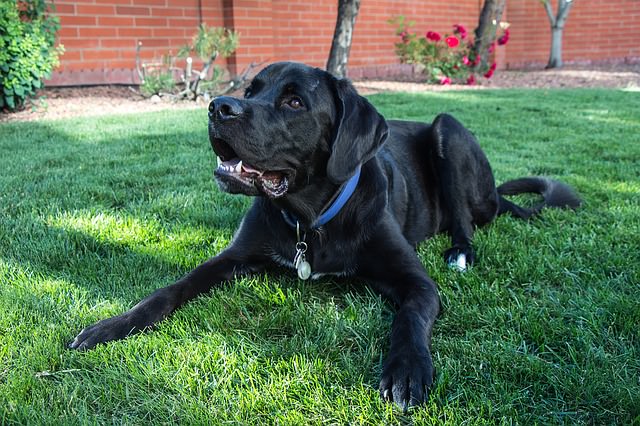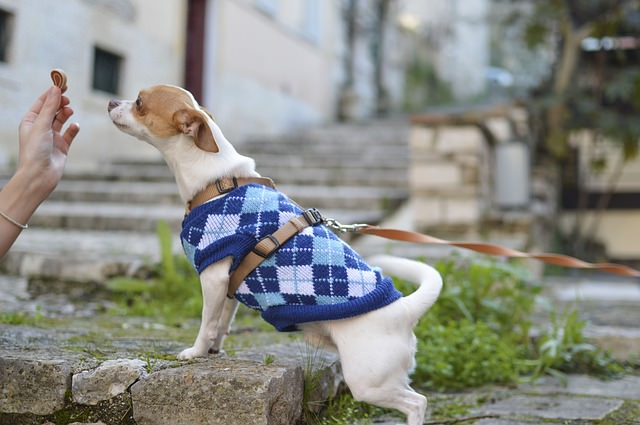Every pup parent has been ignored when trying to give their dog commands. Maybe your companion won’t “sit” or “lie down,” especially when there are distractions. Perhaps your dog doesn’t listen to “come” (which can be dangerous, given the situation). You may be wondering why your dog’s obedience is inconsistent (or non-existent!), and what you can do about it.
As it turns out, there are a couple reasons why your pup may be disregarding your commands, even if he’s eager to please you most of the time. Below are 5 reasons why your dog may be ignoring you.
1. Command Nagging
“This term is what we trainers call it when someone repeats a cue more than once,” explains dog trainer Kristina Lotz.
For example, maybe you tell your dog to sit. When he doesn’t do it immediately, you say it again… then again…
This could be a particular problem if your pup just learned the trick. “Your dog just learned a cue and may be taking a second or two to think about what the word you just said means,” Lotz adds.
Another problem with “command nagging” is that your dog starts to tune it out when there’s no reinforced action or reward to follow. This could also be the reason he doesn’t respond to you anymore when you say “no.”

2. Poisoned Cues
When you begin “command nagging” on a regular basis, your dog learns that the repeated word is the cue. For example, the command for “sit” becomes “sit, sit, sit” because that’s what you’ve practiced!
Another example of a poisoned cue is when your dog associates the word with something negative. For instance, if you say “come” every time he needs a bath or nail trim (and he hates it), he’ll start to learn that “come” means something negative.
“If the cue is poisoned, you will find it quicker and easier to retrain your dog if you choose a different word,” says Lotz. “For example, instead of ‘sit’ use ‘settle,’ ‘seat,’ etc. For ‘come,’ use ‘here,’ ‘with me,’ etc. Then, remember patience as your dog figures out what the new cue means!”
Also, consider training your dog with hand signals (which can go along with the verbal commands). This can be a more effective method for some dogs, and if they start to lose their hearing as they age, you’ll still be able to communicate.
3. Lack of Comprehension
Especially if it is a new command, repeating it is not going to help him understand if he’s still unsure what it means. Make sure he has the behavior solidly learned before you give it a cue. For instance, give him a treat every time he sits before you start using the cue “sit.” Soon, he’ll associate the action with the word rather than getting it confused with something else.
To avoid overloading his brain, teach your dog one thing at a time. Make sure you give your pup lots and lots of practice with the (one-word) cue until it’s solidified in his memory.

4. Too Many Distractions
As a rule of thumb, a scent-filled hiking trail or a park full of frolicking pooches probably isn’t the best place to learn new tricks. There are simply too many distractions that are, quite frankly, much more interesting than your commands! (Imagine being in Disney World and having someone trying to lecture you… boring!)
Your best plan is to teach the commands at home, when there are little distractions. Then, when your dog becomes an expert, you can practice what he already knows while introducing more stimuli.
“Also, have patience in new places or when distractions are around that might make your dog’s response time a bit slower than you think it should be,” Lotz adds. “If he doesn’t respond at all, then something about the environment is making your dog nervous or stressed– repeating the cue won’t make him listen! Instead, adjust the environment until your dog is in a position where he will respond, and work from there.”
5. Lack of Positive Reinforcement
Yes dogs live to please us, but if you think that’s enough of a reason for them to obey you, it’s time to up the ante!
Some dogs respond best to a vigorous pet and exclamation of “good boy!”, some prefer tasty treats, and others opt for a quick toss with a favorite toy after a completed task. As long as your dog feels like he’s being rewarded, he’ll learn that obeying you comes with some pretty nice perks!

